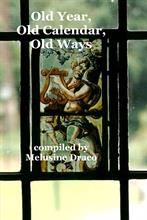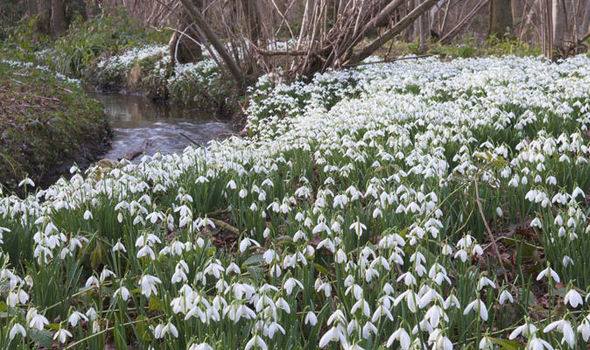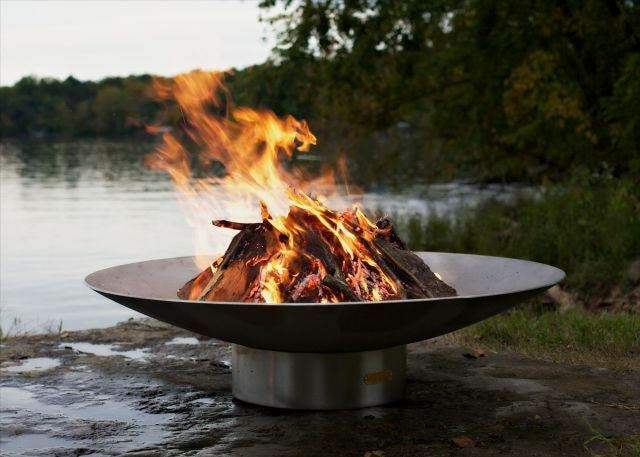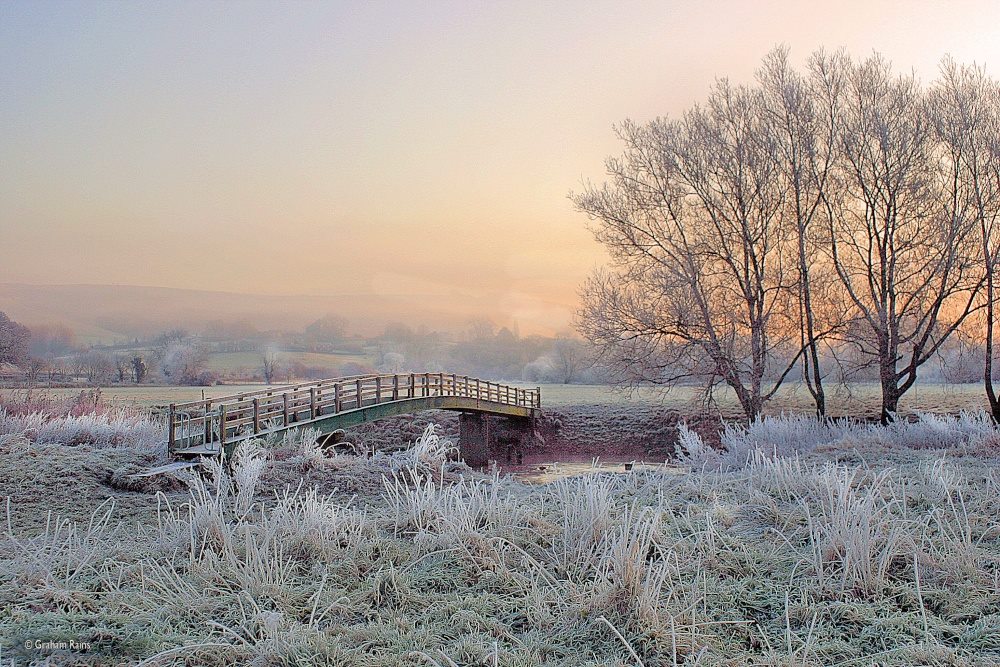
As Trevor Greenfield, the protective spirit and guiding light of Moon Books never tires of reminding me, I am the Moon Books Matriarch, having published my first book with them in January 2012 (the first month the imprint started) and 23 books later I’m is still there with a new title (Sexual Dynamics in the Circle) out in March 2021.
In fact, my first book for John Hunt Publishing was for the O Books imprints, Mean Streets Witchcraft, but this was re-packaged two years later as the first in the ‘Traditional Witchcraft’ series for Moon Books as Traditional Witchcraft for Urban Living. For the witch whose career confines them to an urbanized environment, regular Craft practice may often seem like a futile gesture, especially if home is a small, gardenless-flat. Even the suburbs can be magically incapacitating, if there is constant noise from traffic and neighbours. People work long hours; often setting off for work and getting home again in the dark during the winter months, without having the opportunity to notice the subtle changing of the seasons. Weekends are a constant battle with family commitments, domestic chores and socialising. It’s no wonder that the urban witch has little time or strength left for magical and spiritual development.
There are, of course, others who find themselves having to remain town and house-bound because of age or disability; because they are caring for an aged/infirm parent, or partner; or because they have small children. Urbanisation often provides on-the-spot facilities to make things easier on the domestic front but it cannot give the one thing that a witch needs most – privacy and spiritual elbow-room unless we learn to look at our surroundings from a different perspective.
I am a Welsh witch and I come from a place midway between the mountains and the sea, but I have not lived in my homeland now for many years. It would be untrue to say that I never experienced what the Welsh call hiraethus, that indescribable feeling of longing and home-sickness but, as we all know, in magical terms there is always a price to be paid for our Craft. During those long years, my career and domestic life has taken me to London (where I lived for 20 years), to the industrial Midlands and to a totally urbanised area of East Anglia, before moving to Ireland. Not once, in all that time (until I came to Ireland) did I return to the luxury of wild, open spaces – it was all concrete and asphalt. But not once, in all that time, did I stop being a true witch.
In my experience, the greatest problem an urban witch faces is that an urban environment is not user-friendly when it comes to psychic activity, but then we don’t always have a choice of where we are going to live if someone else’s needs have to be catered for, too. Mostly I have been confined to renting small terraced cottages and flats, often with little or no garden to give that extra bit of space. I make this comment merely to demonstrate that my Craft activities have not been conducted in a round of luxurious city apartments and picturesque Grade II listed town houses!
Under these circumstances, for me the key words have always been: acclimatise, adapt and improvise. Any animal, plant or person that is uprooted and transported to another environment quickly learns to acclimatise if it is going to survive. I have adapted to my surroundings and drawn on whatever material/energy there is to hand, even if it is not what I’ve been used to working with. I improvise by drawing on existing knowledge and experience. So … Traditional Witchcraft for Urban Living was conceived out of necessity with a view to guiding others facing similar problems.
The series has maintained a steady readership over the years, and has provided a background for recommended reading for those on the Arcanum foundation course, since potential questers often come to the Coven of the Scales having read one or more of the books. Traditional Witchcraft for the Seashore reflects our teaching that is dependent on the understanding of the natural tides that affect our planet: Earth, lunar, solar, oceanic, atmospheric, electro-magnetic, liminal and astral … All these natural tides are what power our magical abilities and improve our chances of helping to maintain the Sacred Order (balance/harmony) of our faith.
If we step back for a moment into those distant childhood memories and visualise a day at the seaside – but strip away the images of crowded tourist beaches and focus on the sound of the movement of the sea. If we need any reminder, we hold a large seashell to our ear and summon up the voice of the waves. In the depths of our subconscious mind this sound will be a low, muted purr as small waves lap at the water margin; or the roaring of breakers against a sea wall; or the sly, insidious murmur as the tide begins to turn along narrow channels and between sand banks. In fact, we can never encounter the sea in any of its moods, without being aware of its movement; the waves on its surface and the tides and currents, which send it swirling around the globe.
No series on the Craft would be complete without Traditional Witchcraft for Fields and Hedgerows, because for both countrywomen and witches the hedge was a veritable treasure house: a source of food, drink, medicine, shelter, fuel and dyes, while numerous superstitions
arose around many hedgerow plants. After feasting on the autumn harvest of elder and blackberries, birds turn to rosehips and haws, then sloes, and finally to ivy berries and this is where we become familiar with our totem animal or bird in its natural habitat.
Unlike the traditional wort-lore of witchcraft, however, folk or domestic plant medicine was the everyday use of plants by ordinary people to cure minor wounds and ailments. In fact, the use of common native plants in everyday home medicine is now almost obsolete, largely because it was mainly a DIY collection of first aid remedies, often passed on orally, rather than a written record. As a result, even many of today’s witches are unaware of the therapeutic effects of ordinary kitchen herbs. With proper care and caution, the same herb used to flavor cooking can be used in a more concentrated form to relieve pain.
Simple home remedies did not require any accompanying magical ritual to make them work; a countrywoman would merely pick the necessary plants from the garden or hedgerow to make a preparation for the family’s fever, or to treat a wound. It doesn’t matter whether we refer to ourselves as witch, wiccan, or pagan. Whether we belong to a coven, or consider ourselves to be a ‘solitary’ but important part of the larger pagan community … when we observe what we can view as ‘field Craft’, more often than not, we tend to work alone. The benefits of being a solitary witch means we can work whenever we feel like it, regardless of the date on the calendar, the phase of the moon, or what anyone else considers to be a ‘right’ or ‘wrong’ time of the day. The only ‘rule’ we need to learn and obey, is the relentless call of the natural cyclic tides of Nature … nothing else.
No book ever written can teach us how to become a witch. Only Nature can do that. Only Nature can coax out those long suppressed abilities and give us back the freedom to be a witch, releasing the knowledge of the Elder Faith back into the world. So let’s walk through the fields and along the hedgerow together and discover Nature as she moves through the year …
My favourite and not because it’s the best-selling title in the series, Traditional Witchcraft for the Wood and Forests reflects the natural type of landscape in which I feel the most comfortable. First and foremost, forests and woodland have played a mystical role in all cultures where trees have dominated the landscape. Trees bring Nature right up close and personal and, as a result, the whole of the natural world becomes a ‘tangled web of enchantment’ to a true witch’s eyes. Most of us are familiar with what we call ‘broad leaved’ woodland … that is to say, forest made up predominantly of trees whose leaves are basically flat, as opposed to being needle-shaped like those of the conifers of the evergreen world. These trees are mostly deciduous (with the exception of the holly, box and strawberry tree), and shed their leaves when winter approaches, lying dormant until the warmth of spring stimulates new growth.
Before we begin to practice the Craft of the wood-witch, however, we must learn to look at trees with different eyes, because there is still a sense of mystery and enchantment in the woodland world. Each month of the year imprints its own beauty on the trees, and in time, we will become aware of every subtle nuance as part of this sacred mantra, with each month bringing different plants for a witch to use in her magical workings. The spring shimmer of birch and beech bursting into life … the cool of a summer glade filled with the whispering of the leaf canopy … the rich hues of autumn … branches glistening with hoare frost in the winter sunshine …
The aim of Traditional Witchcraft and the Pagan Revival was to provide a sympathetic approach to the evolution of witchcraft as a historical reality, rather than as mere circumspection – or wishful thinking. By combining scholarly writing and recent archaeological findings with a ‘quality of fascination’, I hoped it would prove to be a pleasure to read and a source of new insight for those who would follow the tradition of the Elder Faith. It shows that witchcraft did (and does) exist, and traces the origins and true nature of the many different contemporary pagan beliefs back to their roots. And, what is equally as important, to understand is when outside foreign influences were grafted onto indigenous pagan stock by getting the late Michael Howard (The Cauldron) to check the finished typescript for error!
I’ve been asked why Pagan Revival was the fifth in the series rather than an introduction, and the reason for this is because it’s not until a quester has acquired a reasonable amount of background knowledge about Old Craft that these questions demand answers. Unfortunately, in the rush to establish the many different forms of 20th century revivalist paganism, the element of curiosity has often been suppressed in favour of historical ignorance. Anything that is non-Christian in origin is immediately embraced as ‘pagan’, despite the fact that much of it had little to do with the indigenous people of the British Isles. It also leads to the acceptance of ‘fakelore and fantasy’ as a basis for a considerable amount of contemporary thinking. Reviewing one of these pseudo-history books in White Dragon magazine some years ago, the editor wrote: ‘Books like this pose more of a danger to paganism than the Christian Right will ever do, because they are the enemy within, subverting the Mysteries and dumbing down for spirituality’s equivalent of the day-time television audience.’ Ouch!
From a 21st century standpoint, however, much of what now passes for pagan belief has jettisoned its former labels of ‘occultism’, ‘witchcraft’ and ‘eccentricity’, and now boasts a
diverse doctrine, suitable for pre-pubescent schoolchildren to venerable pensioners, from all walks of life and cultures. On the traditionalist’s side, this hard-won respectability means that, in
many cases, both the genuine magical and Mystery aspects of the original Sacred Order have been abandoned in favour of a wholesome image more reminiscent of the ad-man’s fictitious ‘Oxo family’ than of the real-life Lancashire Witches.
It must be said from the onset that there is nothing wrong in anyone embracing a neo-pagan life-style. What we should try to do, however, is put into some kind of perspective the impact of the magico-religious links with our ancestral roots when we choose to follow a path or tradition that is alien to our own genius loci – the collective or natural spirit of old Pretannia. Whatever numerous contemporary authors may tell us, the Celts were not the indigenous people of these islands; modern Wicca is not synonymous with traditional witchcraft; traditional British Old
Craft is not a myth; and subsequent invading cultures did not impose blanket religious conversions on a conquered people.
The kernel of the Elder Faith, however, is a belief in a definite association of force (or energy) within specific localities, and the notion of natural universal energy influencing cause and effect. The belief embraces the notion that spirits (or natural energy) inhabit everything in Nature – every hill, tree and stream, every breeze and cloud; every stone and pool has its own ‘spirit’ – although there are no authentic pagan ‘scriptures’ on which we can rely for guidance or comparison. We should not, however, take this to mean that an Old Craft witch is spiritually backward, or lacking in tradition. The most amazing thing for us to consider, is that all this wondrous insight into the metaphysical and mystical world would have been passed down via an intuitive oral tradition, amongst people with no (or little) formal learning.
In reality, it is possible to perceive ourselves as spiritual beings without being at all religious, because spirituality is how we ‘feel’ about the meaning of life – it is the quest for the hidden mysteries and need not necessarily manifest in religious terms. Lacking in intellect but not in application, the witch of yesteryear would probably have fully understood the sentiments expressed in a collection of spiritual essays dating from 1897, The Treasure of the Humble, wherein the author writes about Ultima Thule – the extreme limit – which also can be applied to the Mysteries of the Elder Faith today.
‘We are here on the borderland of human thought and far across the Arctic circle of the spirit. There is no ordinary cold, no ordinary dark there, and yet you shall find there naught but flames and light. But to those who arrive without having trained their minds to these new perceptions, the light and flames are as dark and cold as though they were painted. This means that the intelligence, the reason, will not suffice of themselves: we must have faith.’
Even in more modern times, however, it is not surprising that ‘Trust None!’ remains the creed of our Sacred Order and it has preserved its Mysteries by not divulging its rites and practices. No matter what a publisher’s blurb may claim, there are no genuine traditional British Old Craft rituals, rites of passages, spells, charms or pathworkings in print, for one simple reason – any traditional witch committing any of this knowledge to paper for public scrutiny would be in breach of their own Initiatory Oath. This still carries the ultimate penalty for treachery and betrayal. Admittedly, there are ‘smokescreens’ that may offer a parody of the genuine thing – but the gnarled roots of the Elder Faith remain firmly in the shadows, where they belong. Although there may be a variation in formulae from region to region, the underlying Mysteries remain the same, and the only way to know about the Mysteries is to have experienced them first hand.
Because of its occult (i.e. ‘hidden’) nature, traditional British Old Craft methods really do differ from region to region, so the opportunity of being in the company of genuine, traditional witches meant that late-night magical discussions were all part of the invaluable exchange of information that Old Crafters enjoy when meeting with those of their own kind and calibre. It was usually well past midnight when the cauldron would be well and truly kicked over; the dross discarded and the rare elixir of knowledge at the bottom shared and savoured.
In fact, the whole Traditional Witchcraft series was deliberately structured along the lines of a foundation course, so that any would-be traditional witch had a step-by-step guide to follow. Traditional Witchcraft for Urban Living was the first in the series and, as the title suggests, aimed at the majority of pagans who live in an urban environment rather than insisting that a witch must live in the country before they can learn about traditional Craft. The second step was revealed in Traditional Witchcraft for the Seashore that teaches the importance of understanding and working with those natural tides within our own environment, even if we do not live by the sea. Step three, Traditional Witchcraft for Fields and Hedgerows, examined what most of us would think of in terms of traditional Craft, and brings us back into the comfort zone where we feel safe and secure – before step four casts us back out into the more hostile world of Traditional Witchcraft for the Woods and Forests - the magical energies differing quite considerably between these four environments.
The historical view of Traditional Witchcraft and the Pagan Revival was left until step five, because it’s not until we’ve been studying traditional Old Craft for a while that we start to notice both the differences and the similarities between the various pagan disciplines. We want to know where our own beliefs come from; to trace these antecedents; and to understand why some of our ways are often diametrically opposed to those of other traditions we read about – and why. That is the reason for the fifth book in the series being written as a magical anthropology; simply to make sense of some of the things we’ve noticed but never fully understood. Traditional Witchcraft and the Path to the Mysteries, the sixth and last in the series, is a voyage of discovery and, as with every journey, it is essential that we understand where we are now and where we want to be. We need proper direction unlike that popular old Irish saying: ‘If I wanted to be going there, I wouldn’t be starting from here!’
Not that this method of teaching has always been favourably received. Some feel that Old Craft is portrayed as elitist, but as Daniel A Schulke observed in his introduction to this author’s contribution to Hands of Apostasy (‘Spirits and Deific Forms: Faith and Belief in British Old Craft’); ‘All of these traditions share a common feature of extreme selectivity when it comes to prospective members, and the willingness to reject those proven unfit for the work.’ Others claim there is nothing new contained within the books, or that there are no great revelations in the text, ignoring the fact that Old Craft learning is about 40 percent information and 60 percent intuition; but it’s also about realizing when intuition is telling us that we don’t have all the information. There are books claiming to reveal the ‘secrets’ of the Elder Faith – but intuition should tell us that if the secrets can be revealed in the reading of just a couple of books, then the author cannot have much to tell. The real secret is that there are no secrets, only a system of revelation that eventually leads to a series of enlightening experiences, guides or teachers, to further ourprogress along the Path to the Mysteries.
It was Andy Lloyd Book Reviews that first put the Traditional Witchcraft series into its proper perspective:
“The ‘Traditional Witchcraft’ series provides varied information about what it means to be a practising witch in modern times. In places, it feels like a guide, or self-help book. But there is much more to it than that. What strikes me is the amount of science running through the books. To understand nature is to live as a part of nature, and ultimately to become one with its changing patterns and cycles, to synchronise one’s own psychic or magical energy with natural tidal forces and the elements. So a witch, like no other religious practitioner that I’m aware of, must study her environment carefully, and attune her life to it … The learning is multi-disciplinary, and feels almost as if one was studying a textbook written by a poet … it has that sense of quiet wonder about it, supported by education, knowledge and, above all, wisdom.”
The complete ‘Traditional Witchcraft’ series is published Moon Books in both paperback and e-book format. Go to www.moon-books.net for more information and ordering.






 RSS Feed
RSS Feed